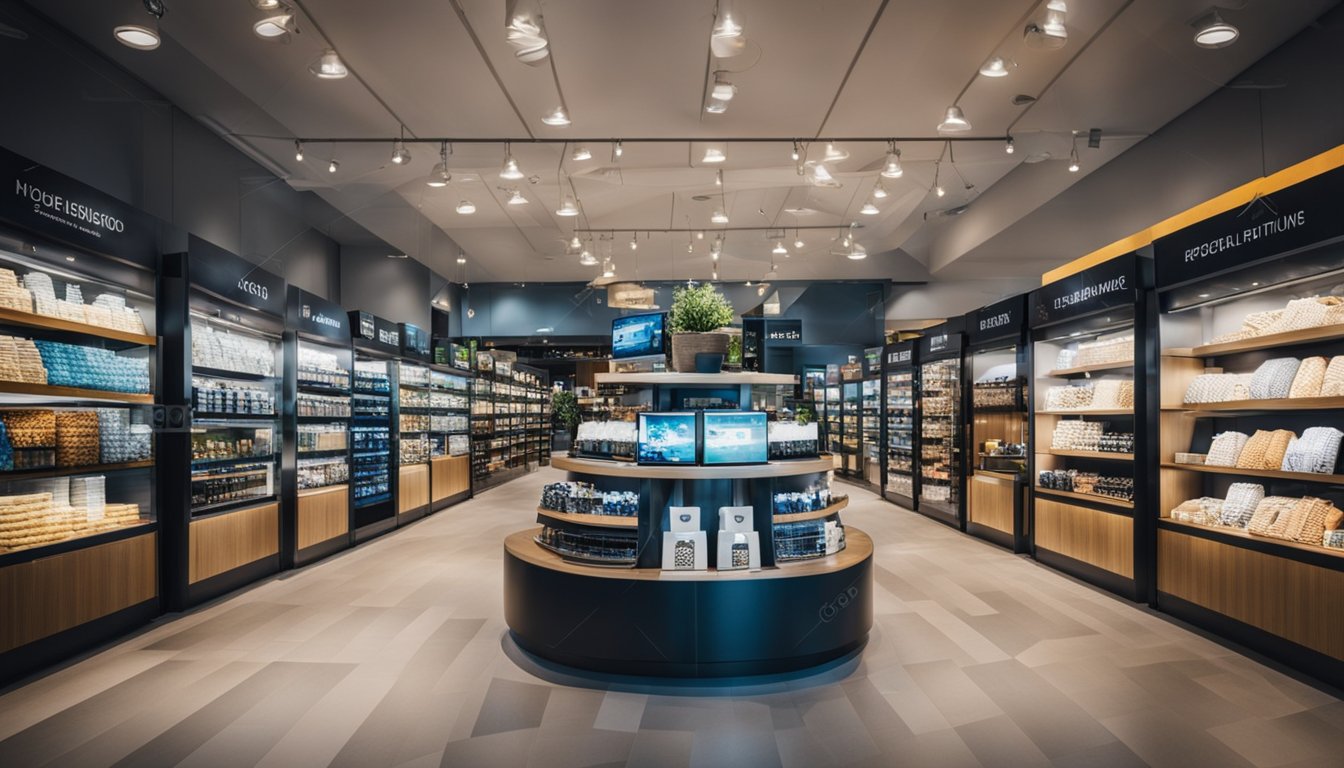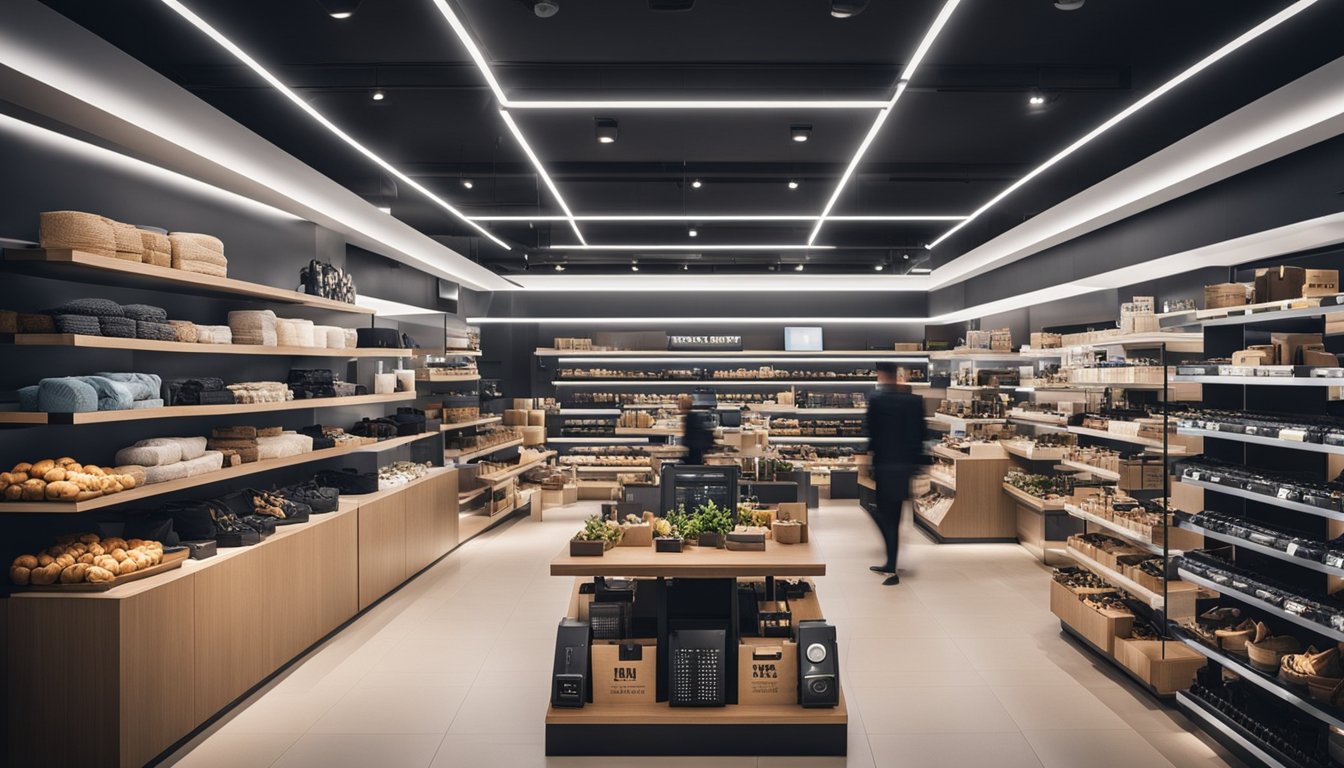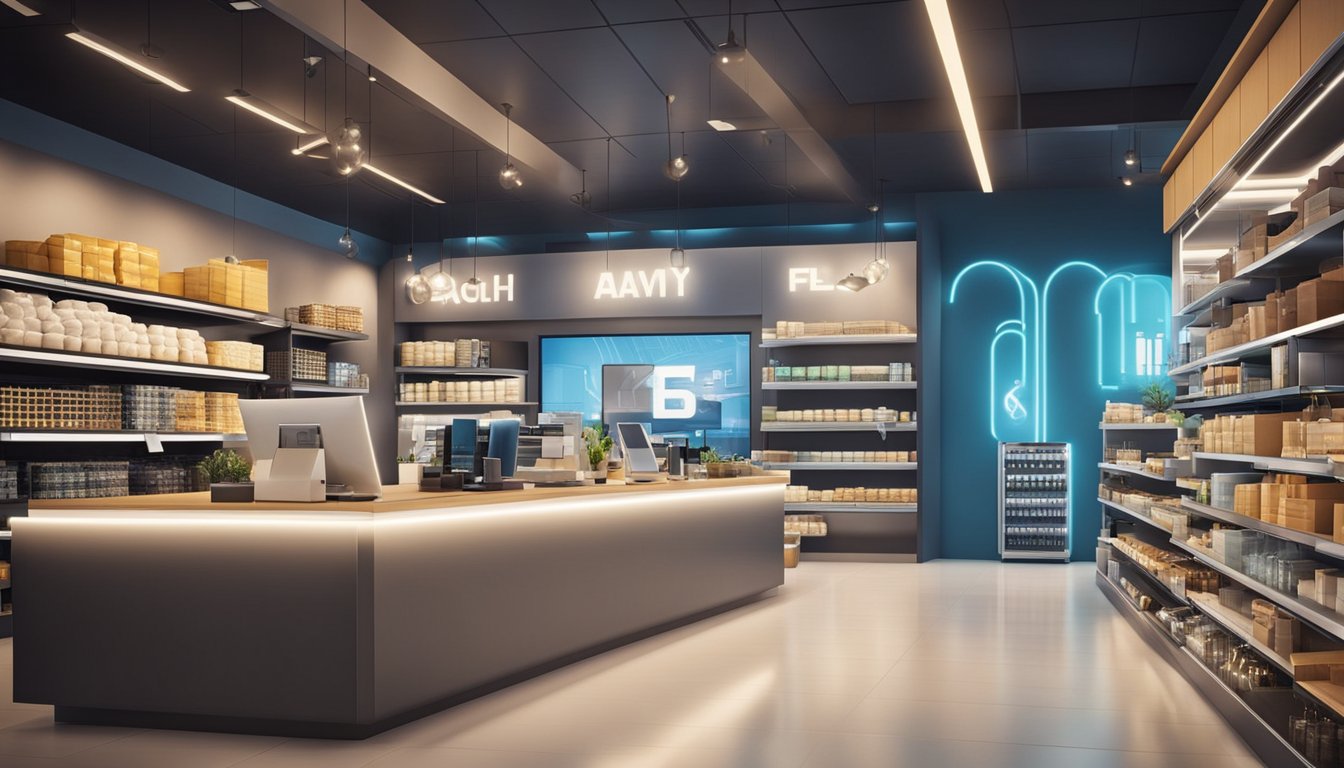Reinventing Retail The Power of Digital Retail and eCommerce Services
As the world becomes more digital, so do our shopping habits. Online retailers have been around for decades, but the pandemic has accelerated the shift to e-commerce and digital-first shopping experiences. In response, retailers are looking for new ways to engage customers, optimize their operations, and drive sales in an increasingly competitive market.

Digital retail and eCommerce services are at the forefront of this transformation. These services offer retailers a range of solutions, from building custom mobile apps to optimizing their online sales channels. By leveraging the latest technologies, retailers can create a seamless shopping experience across all channels, from mobile to web to in-store. They can also use data to make better decisions about pricing, inventory management, and advertising.
Key Takeaways
- Digital retail and eCommerce services are transforming the retail industry by offering retailers a range of solutions to optimize their operations and engage customers.
- Innovations in retail, such as click-and-collect and just walk out technology, are changing the way we shop and creating new opportunities for retailers to differentiate themselves.
- While digital transformation presents many challenges, retailers who embrace these changes and invest in the right technologies can gain a competitive edge in the market.
The Evolution of Digital Retail

As technology continues to advance, the retail industry has undergone a significant transformation. In recent years, digital retail and e-commerce have become increasingly prominent, with the pandemic further accelerating this trend. In this section, I will explore the impact of technology on retail and the role of e-commerce in modern retail.
Impact of Technology on Retail
Technology has significantly impacted the retail industry, from enhancing the shopping experience to improving logistics and performance. With the rise of mobile devices and the internet, retailers have had to adapt to a digital-first approach to keep up with changing consumer behavior.
One significant impact of technology on retail is the rise of click-and-collect services. This allows customers to purchase products online and then pick them up in-store, making the shopping experience more convenient. Retailers have also implemented mobile technologies to improve the shopping experience, such as mobile payments and in-store navigation.
Another area where technology has had a significant impact is logistics. Retailers have implemented innovative solutions to improve supply chain management, such as automated warehouses and drone deliveries. With the help of data analytics, retailers can also optimize their inventory management and improve their overall performance.
Role of E-commerce in Modern Retail
E-commerce has become an essential part of modern retail, with online sales accounting for a significant portion of retail sales. With the pandemic accelerating the shift to online shopping, retailers have had to adapt to this new reality to remain competitive.
One significant advantage of e-commerce is the ability to reach a wider audience. Retailers can now sell their products globally, expanding their customer base and increasing their revenue. E-commerce has also allowed retailers to implement innovative marketing strategies, such as personalized recommendations and targeted advertising.
However, e-commerce has also disrupted traditional retail, with many brick-and-mortar stores struggling to keep up with online retailers. To remain competitive, retailers have had to implement omnichannel strategies that combine both online and offline sales channels.
In conclusion, technology has significantly impacted the retail industry, with digital retail and e-commerce becoming increasingly important. Retailers must continue to innovate and adapt to changing consumer behavior to remain competitive in the ever-evolving retail landscape.
Innovations in Retail: Case Studies

As the retail industry continues to evolve, many retailers are turning to digital solutions to stay competitive. In this section, I will discuss two case studies of retailers that have successfully implemented innovative digital strategies.
Amazon's Retail Strategy
Amazon has been at the forefront of digital retail innovation since its inception. One of its most significant innovations is the "Just Walk Out" technology, which allows customers to enter a store, pick up items, and walk out without having to go through a checkout process. The technology uses cameras and sensors to track customers and items, and the customer's Amazon account is charged automatically.
Another innovation from Amazon is the use of personalized recommendations. Amazon uses data analytics to analyze customers' purchase history and browsing behavior to recommend products that they are likely to be interested in. This technology has been instrumental in Amazon's success, as it has helped to increase customer loyalty and drive sales.
Starbucks' Digital Transformation
Starbucks is another retailer that has successfully implemented digital solutions to enhance the customer experience. One of its most significant innovations is the Starbucks app, which allows customers to order and pay for their drinks ahead of time. This technology has helped to reduce wait times for customers and has also increased customer loyalty.
Another innovation from Starbucks is the use of personalized recommendations. The company uses data analytics to analyze customers' purchase history and browsing behavior to recommend products that they are likely to be interested in. This technology has been instrumental in increasing sales and driving customer loyalty.
In conclusion, retailers that embrace digital solutions are better positioned to succeed in the current retail landscape. Amazon and Starbucks are two examples of retailers that have successfully implemented innovative digital strategies to enhance the customer experience and drive sales.
Challenges and Opportunities in Digital Retail

As the retail industry continues to evolve, retailers must adapt to changing consumer behavior and leverage data for personalized marketing to stay competitive in the global market. The rise of ecommerce and omnichannel has brought new challenges and opportunities for retailers to innovate and improve their performance.
Adapting to Changing Consumer Behavior
One of the biggest challenges retailers face is adapting to changing consumer behavior. With the rise of digital-first shopping experiences, retailers must focus on providing a seamless online and mobile shopping experience while also maintaining the quality of their traditional retail stores. This means investing in tech architecture that can support click-and-collect, mobile payments, and other digital features that consumers demand.
To stay competitive, retailers must also stay up-to-date on market trends and customer demands. This requires a deep understanding of consumer behavior and decision-making, as well as the ability to quickly adapt to new trends and technologies. Retailers must also be able to customize their pricing, visual merchandising, and advertising to appeal to different customer segments.
Leveraging Data for Personalized Marketing
Another key challenge and opportunity for retailers is leveraging data for personalized marketing. By collecting and analyzing data on customer behavior, preferences, and purchase history, retailers can create more targeted and effective marketing campaigns. This includes using AI/ML to create personalized recommendations and offers, as well as using social commerce sales to reach customers where they already spend their time online.
To be successful in personalized marketing, retailers must invest in the right tech architecture and data analytics tools. This includes building a strong data infrastructure, hiring skilled data analysts, and partnering with outside experts when necessary. Retailers must also focus on creating a seamless customer experience across all touchpoints, from online to in-store, to ensure that customers feel valued and engaged.
In conclusion, while there are many challenges facing the retail industry today, there are also many opportunities for innovation and growth. By focusing on digital transformation, leveraging data for personalized marketing, and staying up-to-date on market trends and customer demands, retailers can stay competitive and succeed in the global marketplace.
Frequently Asked Questions

What are some examples of successful digital retail and eCommerce services?
There are many examples of successful digital retail and eCommerce services. Companies like Amazon, Alibaba, and JD.com have revolutionized the retail industry with their online marketplaces and logistics capabilities. Other successful digital retailers include fashion brands like ASOS and Zara, which have leveraged technology to create fast and responsive supply chains and personalized shopping experiences. Subscription-based services like Birchbox and Dollar Shave Club have also found success by using digital channels to reach customers and offer convenient and personalized product offerings.
What are the benefits of digital transformation in the retail industry?
Digital transformation can offer many benefits to retailers, including increased efficiency, lower costs, and improved customer experiences. By leveraging technology to automate processes and optimize supply chains, retailers can reduce waste and improve their bottom line. Digital solutions can also help retailers better understand their customers and offer personalized experiences that drive loyalty and repeat business.
What are some challenges that retailers face in implementing digital solutions?
Implementing digital solutions can be challenging for retailers, especially those with legacy systems and processes. Retailers may need to invest in new technology, hire new talent, and restructure their organizations to fully realize the benefits of digital transformation. Additionally, retailers must navigate the complex landscape of data privacy and security regulations to ensure that they are protecting their customers' information.
How has the rise of eCommerce impacted traditional brick-and-mortar retail stores?
The rise of eCommerce has had a significant impact on traditional brick-and-mortar retail stores. Many retailers have struggled to adapt to the shift towards online shopping, leading to store closures and bankruptcies. However, some retailers have been able to successfully integrate digital and physical channels to create omnichannel experiences that offer the best of both worlds. For example, retailers like Walmart and Target have invested in online marketplaces and delivery services while also optimizing their physical stores to offer convenient and personalized shopping experiences.
What role does mobile technology play in the future of retail?
Mobile technology is increasingly important in the future of retail. Consumers are using their mobile devices to research products, compare prices, and make purchases, making it essential for retailers to have a strong mobile presence. Mobile technology also offers retailers the opportunity to offer personalized experiences, such as location-based promotions and in-store navigation. Additionally, mobile payments are becoming more popular, making it easier for customers to complete transactions on the go.
How are Chinese retailers leveraging digital solutions to gain a competitive edge?
Chinese retailers are at the forefront of digital innovation, leveraging technology to create seamless and personalized shopping experiences for their customers. Companies like Alibaba and JD.com have invested heavily in logistics and supply chain optimization, allowing them to offer fast and reliable delivery services. Additionally, Chinese retailers are using AI and machine learning to better understand their customers and offer personalized product recommendations. Mobile payments are also widely used in China, with services like Alipay and WeChat Pay offering convenient and secure payment options.

We are committed to delivering a new level of automation that will help organizations save time, money, and staffing resources.
 WRITE FOR US!
WRITE FOR US!
